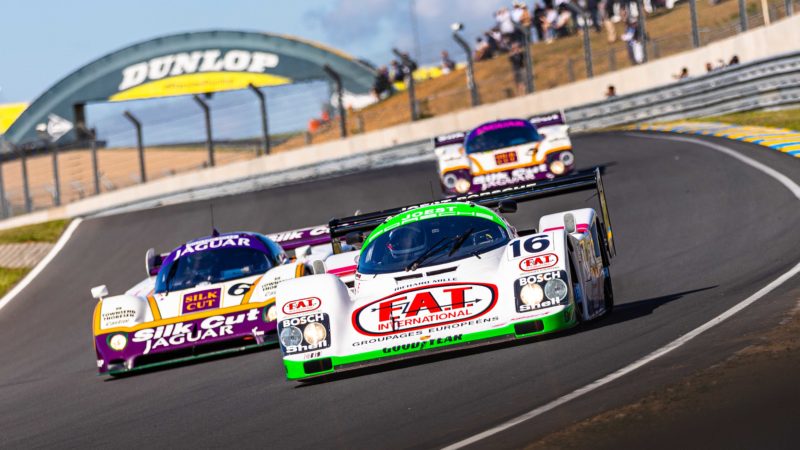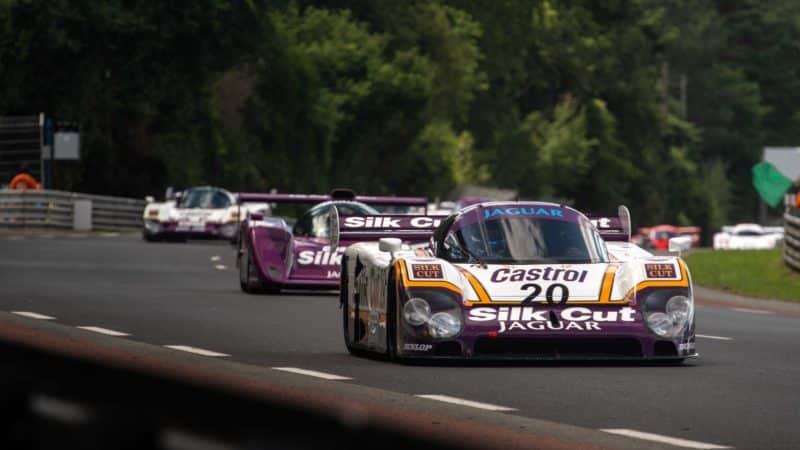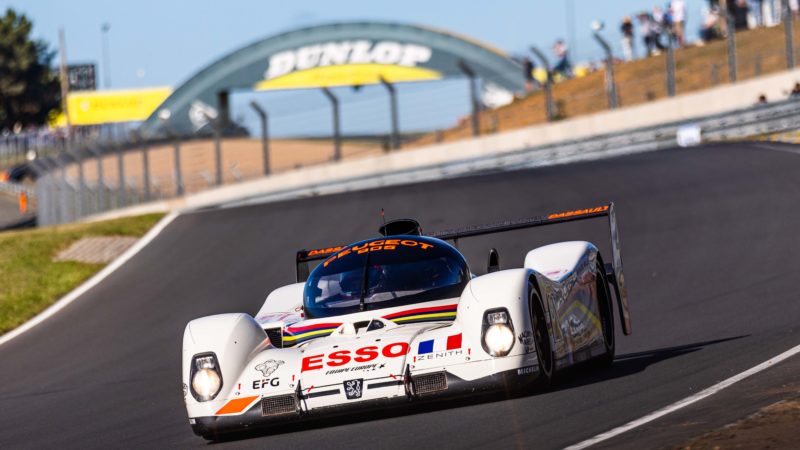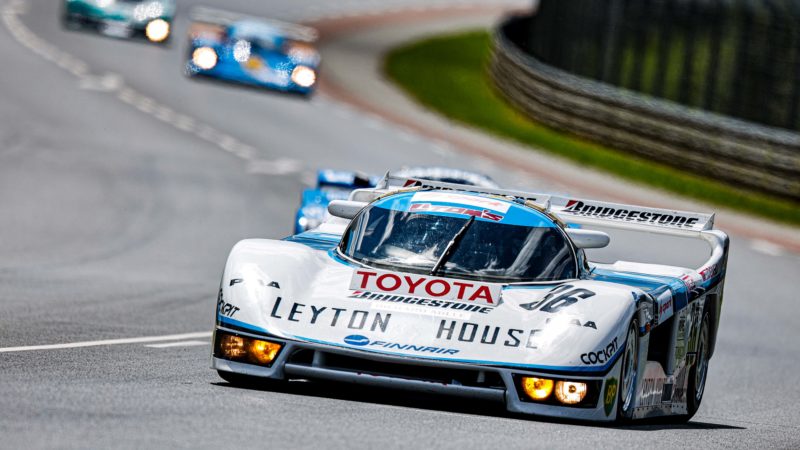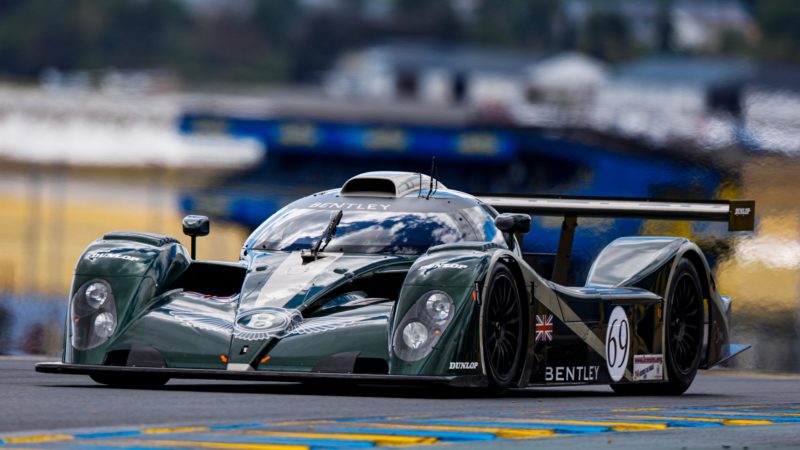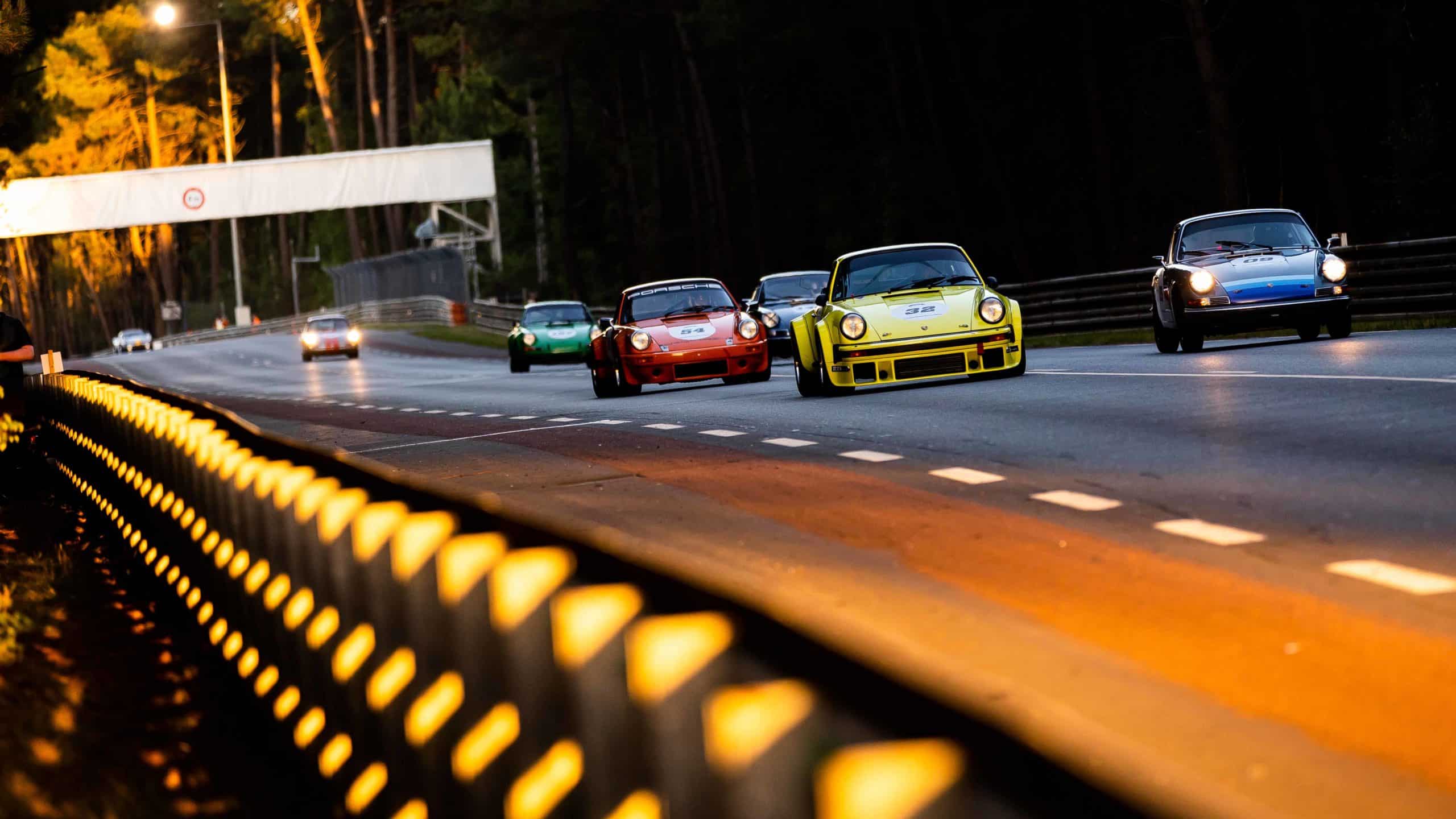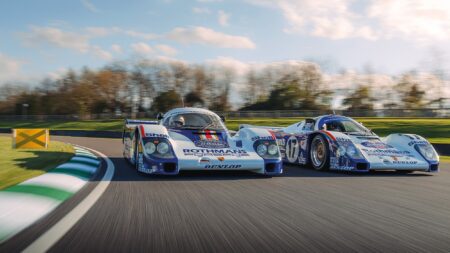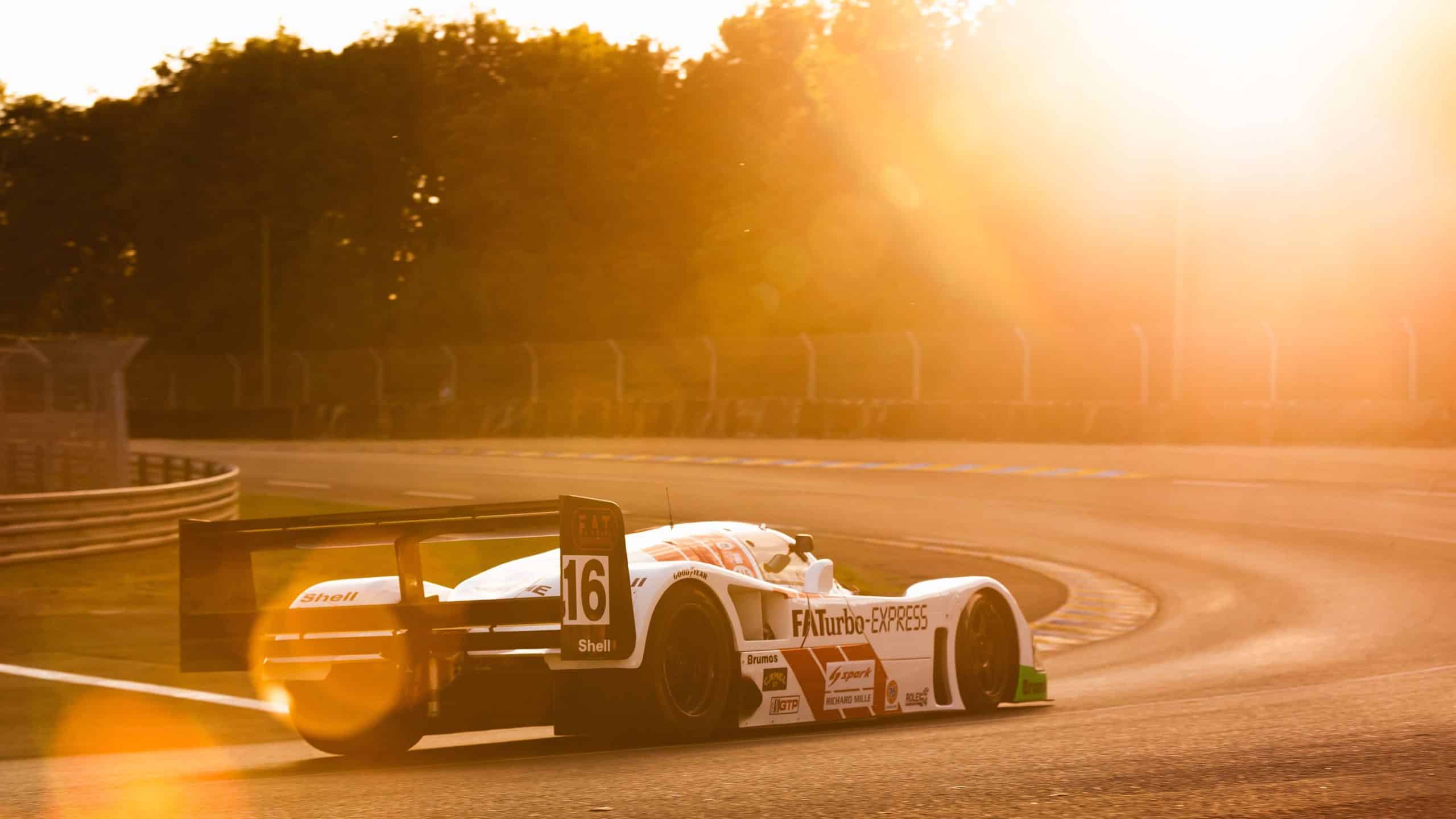The Le Mans Classic is, of course, devoted entirely to sports cars unlike other major historic meetings such as Goodwood, Silverstone or Laguna Seca. The main body of the meeting is what the French called the Plateau, the six groups for cars of defined periods, starting with 1923 to 1939. Each of the six groups race three times during the two days – once on Saturday, then in the night and again on Sunday. Most had an astounding grid of over seventy cars.
For readers not familiar with the format — and it is four years since the event last ran — the overall result is based on the aggregate time of all three approximately 45-minute races. Consistency is very definitely the key word, and indeed in one category the overall winner was someone who hadn’t actually finished first in any of the three qualifying races. Just to add to the fun you can you can nominate one, two, three or even four drivers.
Each race has a mandatory 90-second pitstop so you can either change drivers or give each one race each, with various possible combinations. In addition to the overall classification, there is also an Index of Performance classification taking into account such factors as the age of the car, its capacity and so on but the main focus is definitely on the result on the road.
Following it all is a job in itself, with cumulative results not shown on the timing screens and results only available online, so the best way of viewing is to simply sit back and watch the spectacle.
Plateau 4: 1962-1965 cars
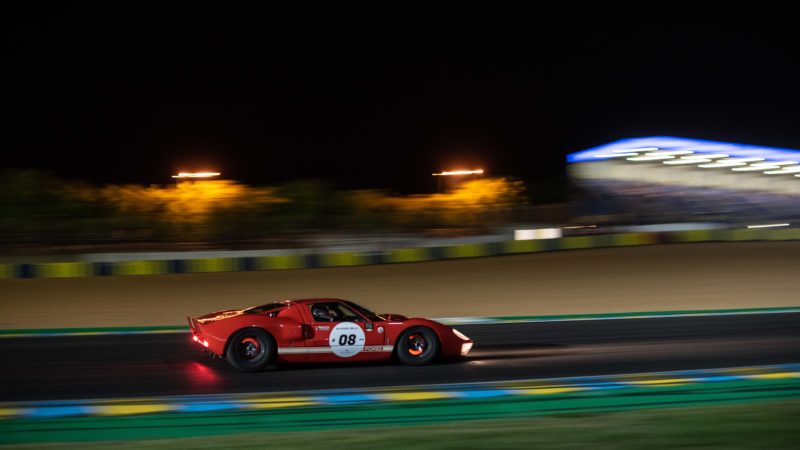
Strong night race for Ferrão saw him victorious in a 1965 Ford GT40
Joris Clerc / DPPI
Counterintuitively the Plateau races started with the fourth group for 1962 to 1965 cars. Sensationally Ford’s 60-year-old CEO Jim Farley put his GT40 on the pole. Incidentally the second and third grids were determined not by the finishing order of the previous race but in order of lap time. After three races over the two days the winner was Portuguese driver Diogo Ferrão in his GT40 after a really strong middle race in the night. Farley came home second overall and Germany’s Emile Breittmayer made it an all-GT40 podium. The Cobra of Michel Lecourt and Raymond Narac was fourth ahead of former CART Indy racer, Holland’s Nicky Pastorelli in the only Ferrari 250GTO racing. Sadly Lukas Halusa crashed the famous Ferrari 250GT-based “Breadvan” causing extensive damage to the £25 million car. Fortunately he wasn’t injured in the violent shunt.
Plateau 5: 1966-1971 cars
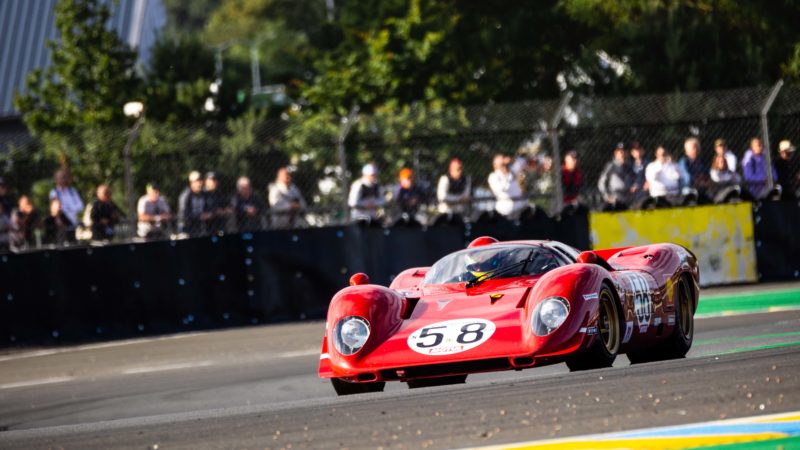
Two race wins for Lips/Franklin in the Ferrari 312P but overall victory eluded them
Damien Saulnier / DPPI
Plateau 5 (1966-1971) followed, where Nelson Piquet made a surprise appearance, driving a little Porsche 914, understood to have raced mainly in Mexico. He finished 40th overall together with a couple of Brazilian friends. Up at the front the overall winner after the three races was a Lola T70 driven by the British pair of Nick Sleep and Alex Montgomery. Two of the races were won by the glorious 1969 Ferrari 312P driven by German GT3 Audi racer Remo Lips. This ex-Amon/Andretti works car is the one that was involved in the tragic John Wolfe crash back in 1969. Remo won two of the races but hit problems in the opening nine laps. Shaun Lynn might have been on for the win but his T70GT hit mechanical problems as did the similar quick example of father and son Dutch pair David and Oliver Hart.
Various problems with other T70s and later model GT40s meant that well known historic racer Henry Fletcher scored a superb second overall in his smart two-litre Chevron B19. Other drives of note came from Xavier Micheron with the Ascot Collection Howmet TX jet turbine car. He finished 13th overall. Eighth overall was Brit David Hinton sharing the Dean and Damon DesSantis brothers’ Lola T70. David runs the popular Daytona 24 Classic which is modelled on the Le Mans event. A spot behind him was racing dentist John Sheldon in his Chevron, those with long memories will recall him surviving a massive accident here in a factory Aston Martin in 1984.
Plateau 6: 1972-1981 cars
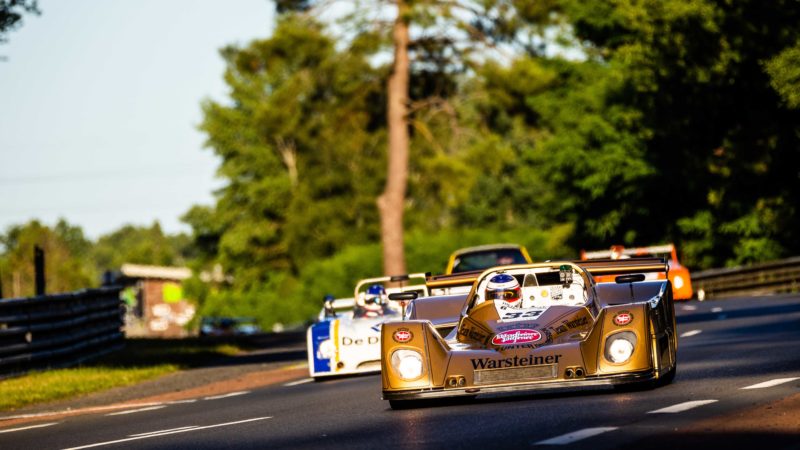
Warsteiner Toj won one of the Plateau 6 races
Damien Saulnier / DPPI
Plateau 6 was a group with a surprise winner Ludovic Caron in his 1975 Chevron-BDG B31 from Beat Eggimann in a rare Cheetah G601 with Philip Bruehwiler third in a Chevron B36. Texan Chris McAllister in the beautiful 1972 Mirage M6, which finished second here in period, won the third of the three races but had problems earlier on. Winner four years ago Yves Scemama, in the lovely Warsteiner gold liveried Toj, won race one but faltered in the night.
Plateau 1: 1923-1939 cars

Atmospheric scenes in the Plateau 1 race
Joris Clerc / DPPI
The favourites to win the category for the earliest cars were the Talbot AV 105s of Gareth Burnett and Michael Birch, twice previous winner here. They dutifully dominated the opening of the three races but then fuel pump and other problems struck them, leaving the victory to the 1925 Bugatti of Duncan Pittaway and Tim Dutton ahead of the Alfa Romeo 8C 2300 of Martin Halusa and Alex Ames. The similar car of American Rob Kauffman could not repeat the overall win it recorded in 1934 when driven by Philippe Etancelin and Luigi Chinetti. Kauffman, a part owner of Ganassi Racing, came home tenth.
Plateau 2: 1949-1956 cars
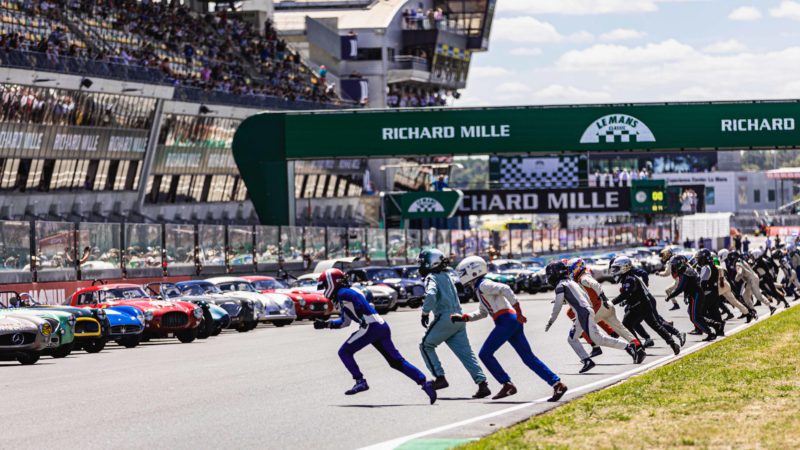
The flag drops in Plateau 2
Damien Saulnier / DPPI
In Plateau 2 for the cars from 1949 to 1956 it was Martin Halusa’s son Lukas who took the win driving with Alex Ames in the 1954 Jaguar D type OKV1, the car that finished second here in 1954. They won all three races and headed home Argentine father and son Mathias and Carlos Sielecki in the ex-works Aston Martin DB3S (reg 62 EMU) raced in period by Stirling Moss amongst others including Peter Collins and Paul Frère, who finished second here with it in 1955 – so some synergy to hand.
Plateau 3: 1957-1961 cars
The final race was Plateau 3 (1957 to 1961) providing, a well-judged win for Oli Bryant in the family Lotus 15. Oli won the first two races but went into the third and final one — the very last of the day – knowing he had a gearbox problem. But he had sufficient margin to nurse it home while allowing James Cottingham and Max Girardo in the ex-Ecurie Ecosse Tojeiro-Jaguar to take the final chequered flag of the meeting. Joe Macari had recruited LMP2 racer and “son of”, Harrison Newey as his co-driver and he helped the car finish second in that race and overall in a 1956 Jaguar D type while James Wood was fourth in another Lotus 15.
In all the races there were many other rare and exciting cars which perhaps didn’t make the top results but were a thrill to witness racing around the track – cars like two 7-litre Ford Mk4s, high tail-fin winged Alpines which used to win the Index of Thermal Efficiency, quirky CDs and DB Panhards and eccentric British cars that raced here like the Deep Sanderson, Mini Marcos – with Jem Marsh’s son Chris at the wheel – TVRs and Morgans.
So ended a superb spectacle and ACO President Fillon, who also raced a Lotus Elite with David Clark, not only announced a crowd in excess of 200,000 but confirmed that to celebrate the 100th anniversary of the Le Mans 24 Hours, the Classic will return next year. Book your tickets now.
